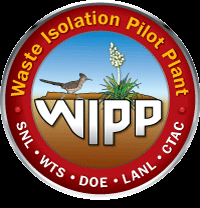Radioactive Waste 185 - Waste Isolation Pilot Plant May Open In December of 2016
I have blogged about the Waste Isolation Pilot Plant near Carlsbad, New Mexico before. The nuclear weapons waste facility is located in an old salt mine. It has been operating for over fifteen years and the operators have gotten sloppy. The are huge rooms that have been hollowed out and filled with barrels of waste from nuclear weapons research and development. When the rooms were filled, they were supposed to be sealed with thick concrete and steel doors. As time went by, the operators decided that steel doors were sufficient. Eventually, they dispensed with the doors altogether.
Back in early 2014, there was an accident at the facility. A barrel of waste from the Los Alamos National Laboratory exploded and released radioactive materials into one of the rooms that should have been sealed but wasn't. The filtration system failed and particles of plutonium and americium were detected twenty miles from the facility. It turned out that the barrel exploded because at the LANL they changed the absorbent material in the barrel from inorganic to organic. Gases were generated which resulted in the explosion.
When records were checked it turned out the record keeping had also gotten sloppy. The exact contents of the barrels in the room where the explosion occured were not listed in detail as required by procedural guidelines. They were able to ascertain that there were about seventy more barrels in the room that had the new absorbent and were at risk for exploding. Time had to passed in order for the room to cool off enough for repairs to be undertaken.
While repairs were being made, the storage facility was closed. This resulted in a back log of barrels left at Los Alamos National Laboratory at risk for exploding. More barrels were sent to a low-level nuclear waste repository in Texas where they were monitored but not enclosed sufficiently to prevent the release of more radioactive materials if any of those barrels exploded.
The Department of Energy promised that the facility would be open back in March of 2016. An audit by the GAO says that the DoE knew when they made that promise that there was less than a one percent chance that they would be able to meet it. Pressure to repair the facility quickly led to poor safety standards for the recovery work. In 2015, the DoE admitted that they would not have the WIPP repairs done before December of 2016 at the soonest. As a result of errors and incompetence in the repair process, there has been nine month delay and an increased cost of over sixty four million dollars. The total estimate for clean up and additional operating costs at the WIPP is now over three hundred million dollars.
Skeptics are concerned, given what has happened to date, that the WIPP will not be able to open by December. If it does not open, further delays in the cleanup of contaminated sites will add millions of dollars to the ultimate cost.
